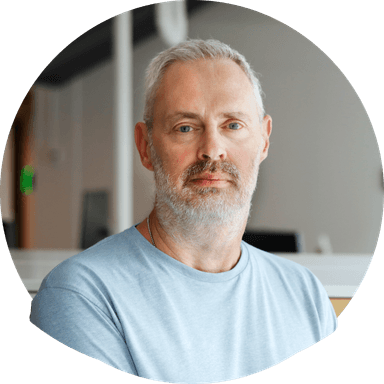Designing for everyone – Kosei's journey into accessibility
We had the chance to host Kosei Oki for a day, visiting us from Aarhus, Denmark. Kosei, a recent UX graduate, is passionate about accessibility and has made it his focus.
About Kosei
- Name:
Kosei Oki
- Title:
UX Designer
- Portfolio:
- Certifications:
Certified Professional in Accessibility Core Competencies (CPACC) through the International Association of Accessibility Professionals (IAAP)
- Based in:
Scandinavia
- Origins from:
Japan
Who are you?

I was born and raised in a quiet, peaceful city called Nerima, located in Tokyo, Japan.
I studied applied informatics at a university in Tokyo and intersectional studies at a højskole in Helsingør. After backpacking and volunteering in Europe, I returned to Denmark to study UX/UI design and frontend development.
How did you become familiar with accessibility, and what motivates you to work with it?
I’ve always been interested in universal design since I was about 9 or 10 years old, when I read a book on the topic. The book featured examples such as scissors designed for both left and right hands, traffic lights with both colours and pictograms, automatic doors that everyone can use, etc.
I resonated deeply with the idea of creating things that simply work better for everyone, and soon realised that this concept isn't seen in real life as often as it should. This started to motivate me to make a difference, to help make the world a better place for all, which might sound a bit dramatic, but I really mean it!
When I encountered the concept of digital accessibility during my studies through books, I had an eureka moment: “This is exactly what I wanted to do!”. Since then, I have been studying and working in this field, and my motivation remains the same.
How did you find Useit?
I first heard about Useit from Stein Erik Skotkjerra, who has been actively working on accessibility at the frontline in Denmark.
I really enjoyed the visit, especially because I felt that the team shares motivations similar to mine, working on accessibility to create a positive societal impact.
One of the highlights of the visit was having a fun conversation with Tommy Feldt about creating an equivalent experience in a highly visual product (explr.fm), and the datepicker that is made easier for everyone (both of which Tommy created, editor's note). It was such a pure joy to discuss accessibility from this purely inclusive perspective, when accessibility conversations tend to focus solely on guidelines and compliance.
Examples of equivalent experience
Made by Tommy Feldt.
Why did you choose Denmark/Scandinavia over Japan?

The reason I came to Denmark was coincidental; it was simply because I'd heard about the strong reputation for universal design in the Nordic countries, and the study programme I wanted to pursue was available here.
I now enjoy living here mostly for personal reasons. For example, the direct communication culture suits my personality well, I feel less stigmatised about my motion tics, I have close access to nature (which I need every day), and most importantly, my eyes don't suffer from hay fever here like they did in Japan. 😃
How important is accessibility in Japan compared to Denmark?
After living in Denmark for two years, I must admit that there is still a long way to go on accessibility, especially in digital spaces, both in Denmark and Japan, in different ways.
Despite EU regulations, many organisations in Denmark seem to struggle to adopt the culture shift, new mindset, and loads of new information, which often results in inaccessible products despite their best efforts.
In Japan, I can see there is still a strong stigma around disability, a part of which, in my opinion, comes from its collectivistic society, which has been creating a separation between "us" and "them".
Organisations in Japan are working to raise awareness and build connections to break the separation between people by creating inclusive spaces, such as the signing coffee shop in Kunitachi, which aims to connect the Deaf and hearing communities through sign language.
As another example, there was an event at a fictional restaurant where everything was designed for wheelchair users, and non-wheelchair users were seen as disabled, which made people reflect on what “disability” really means (the social model of disability).
When it comes to digital accessibility in Japan, I see there is still much progress to be made. Although regulations exist around the public sector and events like Global Accessibility Awareness Day Japan 2025 (GAAD) took place this year, adopting Western accessibility frameworks such as WCAG or even UX in general seems to remain challenging, as they may not fully align with Japan’s cultural context compared to Western countries like Denmark or Sweden, as far as I can see.
I definitely see a capacity both in Denmark and Japan to become more inclusive for everyone in their own unique ways. Although it may take time, I believe continuous effort will get us there.



